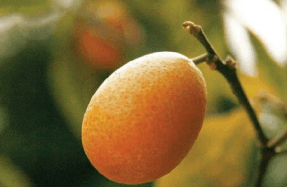Treating arthritis naturally


Arthritis is the term given to more than a hundred different medical conditions that affect the musculoskeletal system, specifically the joints.
Osteoarthritis (OA) is the most common form of arthritis, which is considered a “wear and tear” degenerative disease. Osteoarthritis occurs when there is continual stress being put on particular joints, which wears down the cartilage between the bones and joint. Cartilage is a type of smooth connective tissue that covers the ends of bones where they come together to form joints. It allows bones to glide easily over each other, along with providing cushioning and absorbing shock, and protecting the joints from injury. When cartilage wears down over time the bones start rubbing together, which results in pain and swelling, and eventually loss of mobility.
Other types of arthritis include rheumatoid arthritis (RA), gout, juvenile arthritis, fibromyalgia, psoriatic arthritis, lupus, ankylosing spondylitis, Ross River fever and scleroderma.
RA is the most common autoimmune disease in Australia. In RA the body’s immune system starts mistakenly attacking the joints. This causes inflammation, pain and swelling, and a thickening of the synovium with a reduction of synovial fluid, decreasing joint mobility. The synovium is the tissue that lines the joints and produces a lubricating fluid that allows the joints to move freely. If inflammation is left unchecked, however, bone and cartilage destruction can occur.
The most characteristic symptoms of arthritis include pain, swollen and inflamed joints, stiffness and loss of mobility. Arthritis can hinder a person’s day-to-day life, making it difficult for them to do even the most basic tasks like cooking, opening a jar, driving or walking. Chronic inflammation causes damage to the cartilage and the surrounding tissues which can result in weakness, instability and deformity of the joints. Bone erosion can also be seen in severe RA and in erosive OA, which most often involves the hands of postmenopausal women.
Risk factors
Age is a strong risk factor for OA, with the prevalence of this type of arthritis increasing with age for both women and men. Women, however, have a higher risk of developing OA, especially after menopause. A deficiency in oestrogen has been said to be associated with osteoarthritic changes such as increased cartilage breakdown and joint laxity in the joints in postmenopausal women. RA also occurs more often in women than men, and hormone and genetic factors have been suggested to play a role in this. Obesity is also a major risk factor for the development of arthritis, particularly OA of the knees. Mechanical stress like heavy lifting or kneeling, along with joint injury, can also increase the risk of developing OA. Moreover, nutritional deficiencies are a contributing factor in the development of OA.
Arthritis can hinder a person’s day-to-day life making it difficult for them to do even the most basic tasks like cooking, opening a jar, driving or walking.
Many people believe that developing arthritis is just a part of getting older, but it is actually not a natural part of ageing. Early natural
You’re reading a preview, subscribe to read more.
Start your free 30 days





